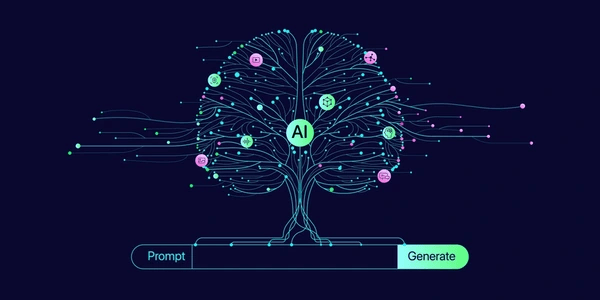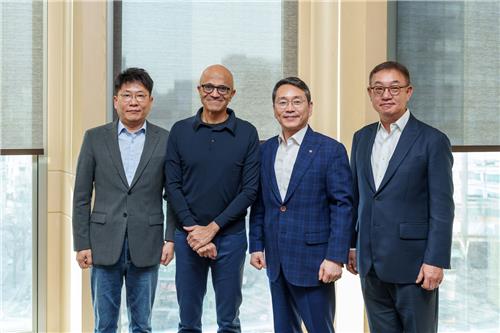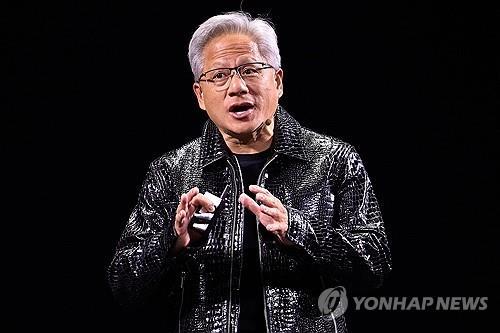Unlocking AI Collaboration with the Model Context Protocol
In my previous post, Overcoming Frustrations with AI in Large Codebases, I wrote from the edge, a developer’s edge. One where AI tools, for all their promise, still trip over the basic reality of how we build software: incrementally, collaboratively, and always within context. I shared the friction I’ve experienced firsthand. Prompt after prompt, only to have the model forget a constraint I’d already explained, miss the architecture I’d already outlined, or hallucinate an implementation that made sense only in isolation. It’s not about the model being wrong. It’s about the model not remembering the why behind the what.
That post was about learning to work with those limitations. This one is about looking beyond them.
Because the real limitation isn’t intelligence, it’s memory. More precisely, structured memory. And if we want to move from clever code generation to real collaboration, we need something foundational. We need a protocol for machine understanding that mirrors the way humans actually work across time. We need is the Model Context Protocol or MCP.
Why Context Fails (and Why It Matters)
Most of us working with large language models eventually run into the same issue. The conversation starts strong: clear goals, tight constraints, helpful code. But as complexity builds, as the thread stretches, the cracks appear. Context slips. Functions become untethered from the architecture. Variables reappear with new meanings. You correct the model, only to see the same error re-emerge two prompts later.
The problem is often dismissed as a token limit, that invisible barrier around how much the model can “see.” But that’s only part of the story. The deeper issue is conceptual: current models operate in a stateless vacuum. They don’t understand what project you’re building. They don’t carry forward intent, constraints, or structure. There’s no shared history. No memory of design decisions. No awareness of interconnected components. It’s like working with someone who’s very smart but has permanent amnesia.
We need to move beyond prompt windows. We need memory as infrastructure.
What is the Model Context Protocol (MCP)?
The Model Context Protocol isn’t a single product or plugin. It’s a conceptual framework, a new kind of Communications Protocol, but instead of moving packets between machines, it moves understanding between sessions, systems, and states of thought. It’s a way of encoding persistent, structured, queryable knowledge that models can reference and reason over – not just respond to.
In simple terms, MCP is about giving AI a Contact Model, a durable sense of what it’s working on, who it’s working with, and how that fits into a broader system. Just like a developer holds a mental map of a codebase, the dependencies, patterns, business rules, and naming conventions. An MCP-compliant model would retain and reason over similar structures.
This isn’t about artificial general intelligence. It’s about practical memory scaffolding for tools we already use.
What MCP Would Enable
Here’s what the MCP Model Context Protocol could unlock for developers, architects, and AI collaborators.
CapabilityWhat It Means in PractiseProject MemoryModels would remember the current project, its goals, stack, and active modules.Scoped ContextDefine boundaries: auth logic here, UI state over there, no more polluted global context.Revision HistoryStore versioned context states, allowing rollback or comparison of changes over time.Contact Model AwarenessTrack relationships between services, modules, or contributors to personalize responses.Map AI MCP ServerIntegrate architectural diagrams, service maps, and dependency graphs into active context.Queryable MemoryAsk questions like: “What were the trade-offs we discussed for this pattern last week?”Prompt Layer DebuggingView prompt state across sessions, trace misalignment back to its root.
This is what collaboration looks like when memory becomes a first-class citizen.
A Glimpse Into a Near Future
Picture this: You’re working on your encrypted messaging app, the one with onion routing, hybrid encryption, and relay node discovery. You’ve already outlined the core modules. You’ve described the KEM logic, the failure recovery process, and the threading model. With MCP, the model holds that entire mental map, not just for this prompt, but as part of a persistent, evolving understanding.
Now you type:
“Add a heartbeat monitor to the onion relay layer. Follow the same structure we used for the KEM retry logic.”
You don’t paste code. You don’t explain the service layout again. You don’t restate your dependency injection pattern. The model knows. Not because it’s guessing. But because you’ve built a shared cognitive workspace and it’s been paying attention.
That’s not science fiction. That’s just memory, applied well.
The Developer’s Gain: From Prompting to Architecting
As it stands, we’re stuck in a loop: re-explaining ourselves to models that forget. But with MCP, the loop breaks. We stop prompting and start architecting. We stop nudging and start guiding. The model becomes less of a glorified autocomplete and more of an actual teammate, one that knows where it is, what it’s working on, and how the pieces fit.
For developers, this means:
• More consistency across code generation and documentation
• Better reliability in multi-step workflows
• Faster onboarding for teams using shared AI agents
• The ability to review, refactor, and debug context, not just code
And maybe most importantly: it means trust. Not blind trust, but trust based on shared memory.
What We Need to Build It
Of course, we’re not there yet. But we could be. If we start thinking of context not as a disposable byproduct of prompting, but as a structured asset. To get there, we’ll need:
• Open context schema standards – JSON or Graph-based representations of context objects
• Secure context persistence – for both local and cloud-based use cases
• Agent-to-agent protocol layers – enabling shared context across multiple AIs or services
• Developer-first tooling – IDE plugins, CLI support, context diffing tools, and visualization
• Map AI MCP Server integration – the ability to feed structural metadata directly into the memory layer
This isn’t about replacing developers. It’s about giving us better tools to work with systems that remember as we do.
Final Reflection: Memory is the Missing Layer
Prompt engineering showed us how to talk to the machine. But it’s only half the conversation. Without memory, meaningful, structured, persistent memory, we’re just sending messages into a void. The Model Context Protocol is the bridge between fleeting interaction and lasting collaboration.
We don’t need smarter machines. We need machines that understand where they are in the story.
And I think that’s worth building.
Financial Year-End Offer is Live!
Automate, innovate, and scale with custom AI solutions tailored to your needs.
Offer valid till year-end — Don’t miss it!
Visit: https://www.osiztechnologies.com/generative-ai-development-company to grab the offer now!










